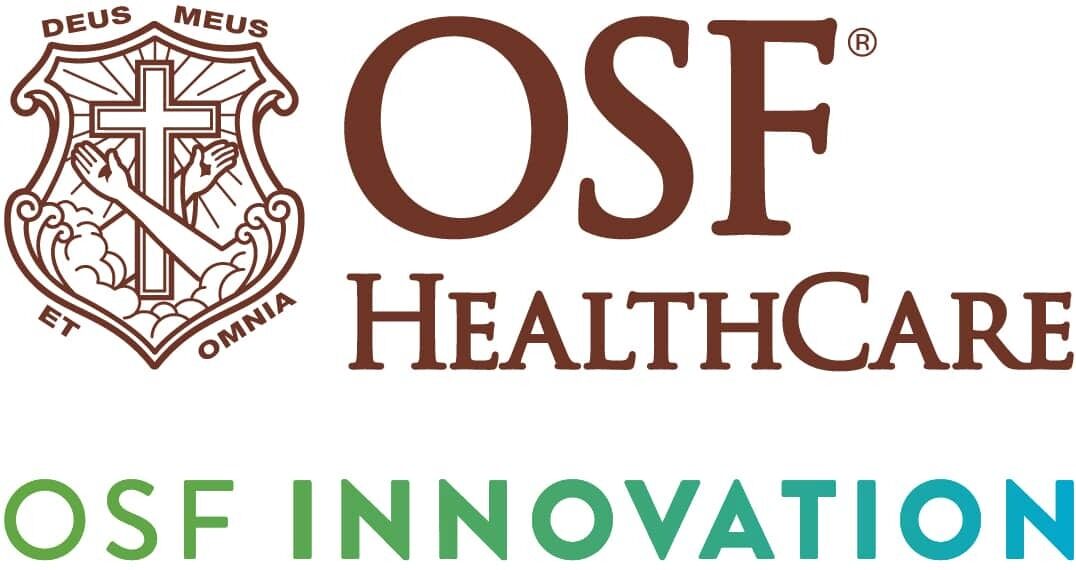
520% increase in patient engagement
- 1M+ Patients served
- 2.5M Patient visits
- $3.8B Revenue

Recent research reveals two of every three people believe they’ve had a negative experience with a medical provider, pharmacy, or hospital (according to a recent Health and Life Sciences Experience survey from Accenture). Key reasons for negative experiences include inefficient visits, medical advice perceived as unhelpful, rude staff, or a lack of emotional support. These negative emotions and experiences can have a significant and lasting impact on an individual’s willingness to participate in their own healthcare.
“Our Mission is to serve with the greatest care and love in the communities we serve by helping patients stay connected through their healthcare journey, in whatever phase of life they are, by creating a frictionless experience and easing their way to better manage health,” says Roopa Foulger, vice president of digital innovation development at OSF HealthCare.
As the leader of digital program development at OSF HealthCare, Foulger and her team are identifying and creating programs to target, communicate, and care for patients in rural Illinois communities. Creating more compassionate care leads to increasing patient engagement rates and positive health outcomes.
Foulger and team have created digital programs, such as remote patient monitoring, based on data to identify, target, and communicate to patient cohorts and encourage healthy behaviors.
“Data analytics is the foundation for a lot of the digital programs because we’re identifying cohorts of patients. For example, we have almost 150 different features that we use to risk-stratify and predict which patient population would be right for specific patient monitoring programs,” explains Foulger.
Many of the features include social determinants of health. Simply understanding the ZIP code where a patient was born can have a profound impact on the individual’s health and care.
“Once a patient is enrolled, we now have more data constantly coming into how their chronic condition is being managed. For example, we might find that for a patient who had a higher level of remote patient monitoring and care, their chronic condition is being better managed, and they can come down in the level of care to a lower tier,” continues Foulger.
Foulger shares another example where analytics and data support a digital care program to provide a modern obstetrics experience. The OSF OnCall Connect Pregnancy and Post-Partum Remote Monitoring Program provides 24/7 support from a digital care team. It is designed to support expectant and post-partum mothers in underserved communities.
“Because we serve in mainly rural areas, there is a lack of access to obstetrics and gynecologists. Some of the underserved populations don’t have the time or luxury to step out of their work or schedule to be able to have an appointment. We use data to serve those patients and encourage them to be in the monitoring program,” Foulger shares.
The program has seen success. “We’ve seen amazing results. In some cases, we’ve prevented some bad episodes from happening because there was data to connect us,” touts Foulger.

With no shortage of data being generated in the healthcare landscape, organizations often face a challenge to integrate and harmonize data to make it usable by the broader business community. OSF HealthCare leverages VantageCloud on Azure and ClearScape Analytics™ as the complete cloud analytics and data platform for AI.
VantageCloud’s open and connected ecosystem allows OSF HealthCare to integrate Microsoft Azure first-party cloud services integrations with Teradata.
“We have Azure Data Factory pipelines, Event Hubs, and API gateways. Because we have all the data in VantageCloud, we’re also looking to leverage our data lake and integrate it with VantageCloud. I see a huge value proposition in terms of where Teradata is moving with VantageCloud and ClearScape Analytics,” Foulger elaborates.
ClearScape Analytics provides OSF HealthCare with powerful, open, and connected AI/ML capabilities that speed up access to insights. OSF HealthCare uses in-database analytics to prepare, train, and deploy Python models directly in VantageCloud. This creates zero data movement while maximizing processing performance and scaling models efficiently.
Foulger describes a fully integrated approach. “Some of our AI models, and a lot of our predictive risk models, are running in Teradata as Python models. Having it run on Teradata is much more efficient in terms of speed and performance.”
Speed and performance provide OSF HealthCare with the timely insights needed to make clinical decisions.
“With some of these models, clinicians depend on them as they are rounding on patients in the hospitals. Making sure information is available, and doing so within one ecosystem or one environment, increases the reliability and flexibility for us.”
Business users at OSF HealthCare benefit from VantageCloud’s ease of use and accessibility. According to Foulger, “OSF doesn’t have database administrators, or DBAs. Everyone is working on data, being knowledge workers, and designing solutions and data products. When we invested in Teradata, the goal was for our data engineers to not manage data but to spend time on engineering and getting value out of data.”
The business value is impactful and tangible. As a result, OSF HealthCare is increasing patient engagement in its digital programs, which improves patient health.
“The data we’ve built is for analytics, and now that we are using that to personalize and connect to patients, we’re becoming more proactive in identifying targeted outreach.” Foulger adds, “By using our data, we’ve seen a 520% increase in patients aligning to whatever they need to do, in terms of their care or care protocols.”
Fortune recently named OSF HealthCare as one of the most innovative companies. The recognition is a testament to its digital innovation empowered by AI, cloud analytics, and data. Looking to the future, Foulger and the digital development team have no intentions of slowing down innovation in AI and leveraging the benefits of generative AI.
“We have an advanced analytics team that has been building a lot of models and AI tools. We have a lot of clinical AI models that help risk-stratify or predict patients’ readmittance rates or manage other issues,” shares Foulger.
Those models, along with existing robotic process automation (RPA), have been in place at OSF HealthCare for several years. Turning to the future, Foulger sees generative AI aiding business operations.
Foulger explains, “We’re now stepping into generative AI as a subset of AI. We have a lot of untapped potential, as almost 80% of our data is unstructured. It’s not just imaging, but also clinical notes and lab results. These are all unstructured and semi-structured.”
While leveraging generative AI to derive clinical insights and recommendations, Foulger stresses that the generative AI insights do not replace clinician decisions but act as decision-support tools that can also aid clinician-patient conversations.
“The value for us is being able to get insights about a patient’s diagnosis or treatment as additional information and an assistant to a clinician—not replacing them, but reducing the burden on the clinicians to search through data and information so they can better understand and have the conversation or diagnose a patient,” Foulger says.
Ultimately, healthcare is built upon trust. Patients must trust the clinicians and their recommendations. Building AI and generative AI models relies on trusted data for healthcare decision-making. Data governance, security, and harmonization will lead organizations to create trusted data for the AI models and algorithms. For Foulger, Teradata VantageCloud is the trusted AI platform her team can depend on to deliver harmonized data and trusted AI/ML.
Find out how Teradata VantageCloud can help you to accelerate business outcomes and provide business agility you need.
Our sales representatives are here to help.